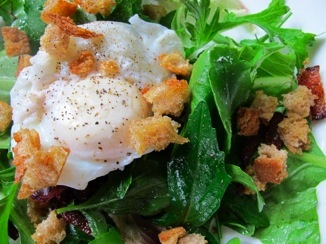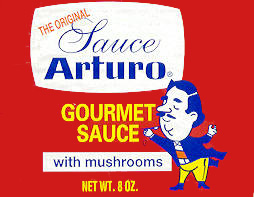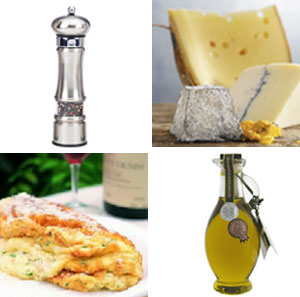 I love grilled veggies, but sometimes prepping veggies for the grill, and then standing vigil over them patiently, is just a little more time than even I’m willing to give. So this week I grabbed my grill basket to make life easier. And I wound up improvising a number of different veggie dishes, using both my Morning Glory haul and the contents of my refrigerator veggie bin. (Just two samples–in the basket above, and finished, below.)
I love grilled veggies, but sometimes prepping veggies for the grill, and then standing vigil over them patiently, is just a little more time than even I’m willing to give. So this week I grabbed my grill basket to make life easier. And I wound up improvising a number of different veggie dishes, using both my Morning Glory haul and the contents of my refrigerator veggie bin. (Just two samples–in the basket above, and finished, below.)
Grill baskets are inherently destructible. They won’t last forever, so don’t bother spending a lot of money on one. Just buy one—you won’t be sorry. (Mine is a particularly cheap, lightweight one that I picked up at a housewares store. But this new stainless steel one from Weber looks like a good bet.)
Basically, using a grill basket is like stir-frying on the grill. But better. Because you don’t have to pay close attention. Stirring every three or four minutes, as opposed to every 30 seconds, is just fine. As long as you follow a few guidelines, you can cook practically any combination of your favorite veggies in about 10 minutes of mostly hands-off time.

 The tech revolution has been a long time in coming to the kitchen. Our
coffee machines are so advanced that they can practically drive us to
work, but Internet-controlled toasters and Web-enabled refrigerators
became punch lines.
The tech revolution has been a long time in coming to the kitchen. Our
coffee machines are so advanced that they can practically drive us to
work, but Internet-controlled toasters and Web-enabled refrigerators
became punch lines.
 So folks are embracing “Meatless Mondays” – from L.A. Mayor Antonio Villaraigosa (maybe he’s also embracing meatless policies) to celebrity chef Mario Battali (who might consider some meal-less mondays – I know, I know, who am I to talk), but what about “Meatless Mostdays?” That’s what’s getting embraced around my house,
So folks are embracing “Meatless Mondays” – from L.A. Mayor Antonio Villaraigosa (maybe he’s also embracing meatless policies) to celebrity chef Mario Battali (who might consider some meal-less mondays – I know, I know, who am I to talk), but what about “Meatless Mostdays?” That’s what’s getting embraced around my house, I think I'm taking this cooking business a little more seriously than I thought I would. You may not actually call it cooking. It's more Sandra Lee than, say, Ina Garten. But I think I am truly more Sandra Lee than Ina Garten. In the days when my kids were actually kids, I got a meal on the table every night. Sometimes I did a complicated dish, but mainly it was throw together. And they loved it. To this day, when asked, any of the three of them will point to my tuna casserole as the finest of meals.
I think I'm taking this cooking business a little more seriously than I thought I would. You may not actually call it cooking. It's more Sandra Lee than, say, Ina Garten. But I think I am truly more Sandra Lee than Ina Garten. In the days when my kids were actually kids, I got a meal on the table every night. Sometimes I did a complicated dish, but mainly it was throw together. And they loved it. To this day, when asked, any of the three of them will point to my tuna casserole as the finest of meals.
